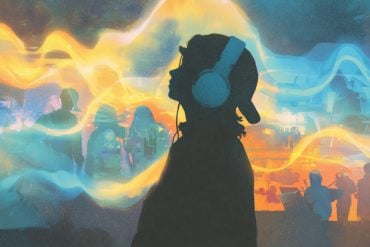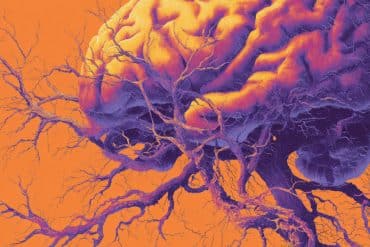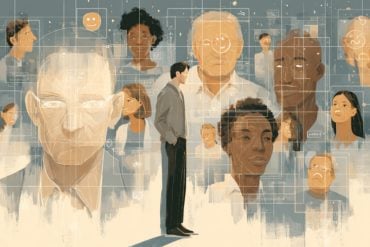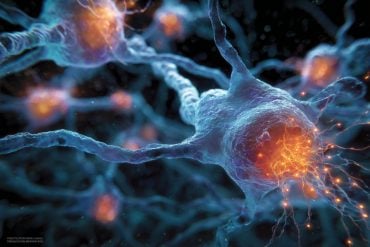Summary: Brain cells snap DNA in more places and in more cell types than previously realized in order to express genes for learning and memory.
Source: Picower Institute for Learning and Memory
The urgency to remember a dangerous experience requires the brain to make a series of potentially dangerous moves: Neurons and other brain cells snap open their DNA in numerous locations—more than previously realized, according to a new study—to provide quick access to genetic instructions for the mechanisms of memory storage.
The extent of these DNA double-strand breaks (DSBs) in multiple key brain regions is surprising and concerning, said study senior author Li-Huei Tsai, Picower Professor of Neuroscience at MIT and director of The Picower Institute for Learning and Memory, because while the breaks are routinely repaired, that process may become more flawed and fragile with age. Tsai’s lab has shown that lingering DSBs are associated with neurodegeneration and cognitive decline and that repair mechanisms can falter.
“We wanted to understand exactly how widespread and extensive this natural activity is in the brain upon memory formation because that can give us insight into how genomic instability could undermine brain health down the road,” said Tsai, who is also a professor in the Department of Brain and Cognitive Sciences and a leader of MIT’s Aging Brain Initiative.
“Clearly memory formation is an urgent priority for healthy brain function but these new results showing that several types of brain cells break their DNA in so many places to quickly express genes is still striking.”
Tracking breaks
In 2015, Tsai’s lab provided the first demonstration that neuronal activity caused DSBs and that they induced rapid gene expression. But those findings, mostly made in lab preparations of neurons, did not capture the full extent of the activity in the context of memory formation in a behaving animal and did not investigate what happened in cells other than neurons.
IIn the new study published July 1 in PLOS ONE, lead author and former graduate student Ryan Stott and co-author and former research technician Oleg Kritsky sought to investigate the full landscape of DSB activity in learning and memory. To do so, they gave mice little electrical zaps to the feet when they entered a box, to condition a fear memory of that context.
They then used several methods to assess DSBs and gene expression in the brains of the mice over the next half hour, particularly among a variety of cell types in the prefrontal cortex and hippocampus, two regions essential for the formation and storage of conditioned fear memories. They also made measurements in the brains of mice who did not experience the foot shock to establish a baseline of activity for comparison.
The creation of a fear memory doubled the number of DSBs among neurons in the hippocampus and the prefrontal cortex, affecting more than 300 genes in each region. Among 206 affected genes common to both regions, the researchers then looked at what those genes do. Many were associated with the function of the connections neurons make with each other, called synapses.
This makes sense because learning arises when neurons change their connections (a phenomenon called “synaptic plasticity”) and memories are formed when groups of neurons connect together into ensembles called engrams.
“Many genes essential for neuronal function and memory formation, and significantly more of them than expected based on previous observations in cultured neurons…are potentially hotspots of DSB formation,” the authors wrote in the study.
In another analysis, the researchers confirmed through measurements of RNA that the increase in DSBs indeed correlated closely with increased transcription and expression of affected genes, including ones affecting synapse function, as quickly as 10-30 minutes after the foot shock exposure.
“Overall, we find transcriptional changes are more strongly associated with [DSBs] in the brain than anticipated,” they wrote. “Previously we observed 20 gene-associated [DSB] loci following stimulation of cultured neurons, while in the hippocampus and prefrontal cortex we see more than 100-150 gene associated [DSB] loci that are transcriptionally induced.”
Snapping with stress
In the analysis of gene expression, the neuroscientists looked at not only neurons but also non-neuronal brain cells, or glia, and found that they also showed changes in expression of hundreds of genes after fear conditioning. Glia called astrocytes are known to be involved in fear learning, for instance, and they showed significant DSB and gene expression changes after fear conditioning.
Among the most important functions of genes associated with fear conditioning-related DSBs in glia was the response to hormones. The researchers therefore looked to see which hormones might be particularly involved and discovered that it was glutocortocoids, which are secreted in response to stress. Sure enough, the study data showed that in glia, many of the DSBs that occurred following fear conditioning occurred at genomic sites related to glutocortocoid receptors.

Further tests revealed that directly stimulating those hormone receptors could trigger the same DSBs that fear conditioning did and that blocking the receptors could prevent transcription of key genes after fear conditioning.
Tsai said the finding that glia are so deeply involved in establishing memories from fear conditioning is an important surprise of the new study.
“The ability of glia to mount a robust transcriptional response to glutocorticoids suggest that glia may have a much larger role to play in the response to stress and its impact on the brain during learning than previously appreciated,” she and her co-authors wrote.
Damage and danger?
More research will have to be done to prove that the DSBs required for forming and storing fear memories are a threat to later brain health, but the new study only adds to evidence that it may be the case, the authors said.
“Overall we have identified sites of DSBs at genes important for neuronal and glial functions, suggesting that impaired DNA repair of these recurrent DNA breaks which are generated as part of brain activity could result in genomic instability that contribute to aging and disease in the brain,” they wrote.
Funding: The National Institutes of Health, The Glenn Foundation for Medical Research and the JPB Foundation provided funding for the research.
About this genetics and memory research news
Source: Picower Institute for Learning and Memory
Contact: Press Office – Picower Institute for Learning and Memory
Image: The image is in the public domain
Original Research: Open access.
“Profiling DNA break sites and transcriptional changes in response to contextual fear learning” by Ryan T. Stott, Oleg Kritsky, Li-Huei Tsai. PLOS ONE
Abstract
Profiling DNA break sites and transcriptional changes in response to contextual fear learning
Neuronal activity generates DNA double-strand breaks (DSBs) at specific loci in vitro and this facilitates the rapid transcriptional induction of early response genes (ERGs). Physiological neuronal activity, including exposure of mice to learning behaviors, also cause the formation of DSBs, yet the distribution of these breaks and their relation to brain function remains unclear.
Here, following contextual fear conditioning (CFC) in mice, we profiled the locations of DSBs genome-wide in the medial prefrontal cortex and hippocampus using γH2AX ChIP-Seq. Remarkably, we found that DSB formation is widespread in the brain compared to cultured primary neurons and they are predominately involved in synaptic processes.
We observed increased DNA breaks at genes induced by CFC in neuronal and non-neuronal nuclei. Activity-regulated and proteostasis-related transcription factors appear to govern some of these gene expression changes across cell types. Finally, we find that glia but not neurons have a robust transcriptional response to glucocorticoids, and many of these genes are sites of DSBs.
Our results indicate that learning behaviors cause widespread DSB formation in the brain that are associated with experience-driven transcriptional changes across both neuronal and glial cells.







